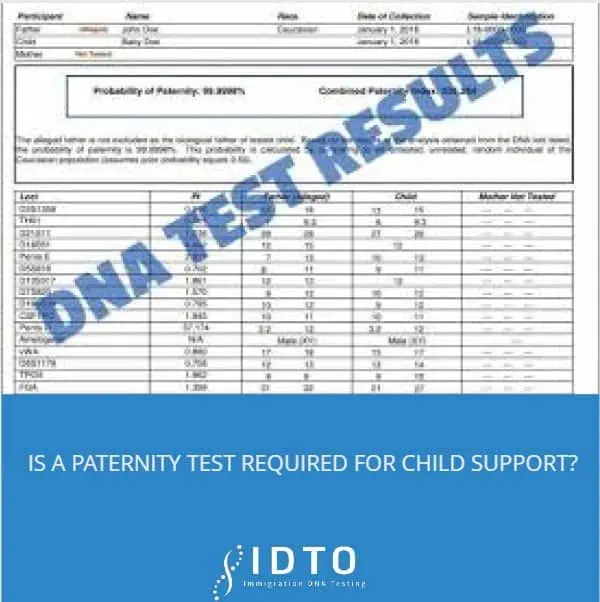
Is paternity test required for child support?
Paternity testing is a part of the process of establishing the paternity of a child for unmarried men. Depending on how paternity was establish, a paternity test may not be performed.
It should be noted that paternity testing is voluntary but refusing to perform when requested by the court would determine what consequences the alleged father or mother may receive.
How do you establish paternity?
Common ways paternity can be established:
1. Paternity is automatically established if a child is conceived during a marriage. The husband is deemed the legal father.
2. When an unmarried man signs an acknowledgement of paternity form at the hospital or state agency.
It is recommended that you seek legal advice in your state to better understand your state’s paternity establishment guidelines.
Who pays for the DNA test for child support?
The responsibility for paying for a DNA test in child support cases depends on the specific circumstances of your case. Here are a few scenarios to consider:
- State-Coordinated Testing: When DNA testing is arranged through the state where you live, participants might need to cover the sample collection fee, depending on state regulations.
- Court-Ordered Testing: In a court hearing, the judge may decide that the alleged father should pay for the paternity testing costs.
- Mutual Agreement: If the alleged father and mother agree to undergo a legal DNA test before filing a paternity petition, they will need to agree on who will bear the cost.
How to get a paternity test for child support?
Performing a paternity test to establish paternity and support for a child occurs the following ways.
- File a paternity petition in family court; the court must approve it.
- Through a child support agency.
How to request a DNA test through the court?
Requesting a DNA test through family court in your state you will need to file a paternity petition with family court. The petition will have to accepted for a DNA test to be considered.
How long does it take to get paternity test results from child support?
The turnaround time for results can take 6-8 weeks on average sometimes longer. Essentially the jurisdiction in which you reside and the court’s workload will dictate how soon you will receive results.
What happens after paternity is established for child support?
Upon establishing paternity in a child support case, the judge will outline the father’s legal rights regarding child custody, visitation, and financial responsibilities. A completed and signed Voluntary Acknowledgment of Paternity form will be sent to your state’s Vital Records Birth Certificate office to add the legal father’s name to the child’s birth certificate.suring accurate and timely action is essential to protect your rights and interests.
